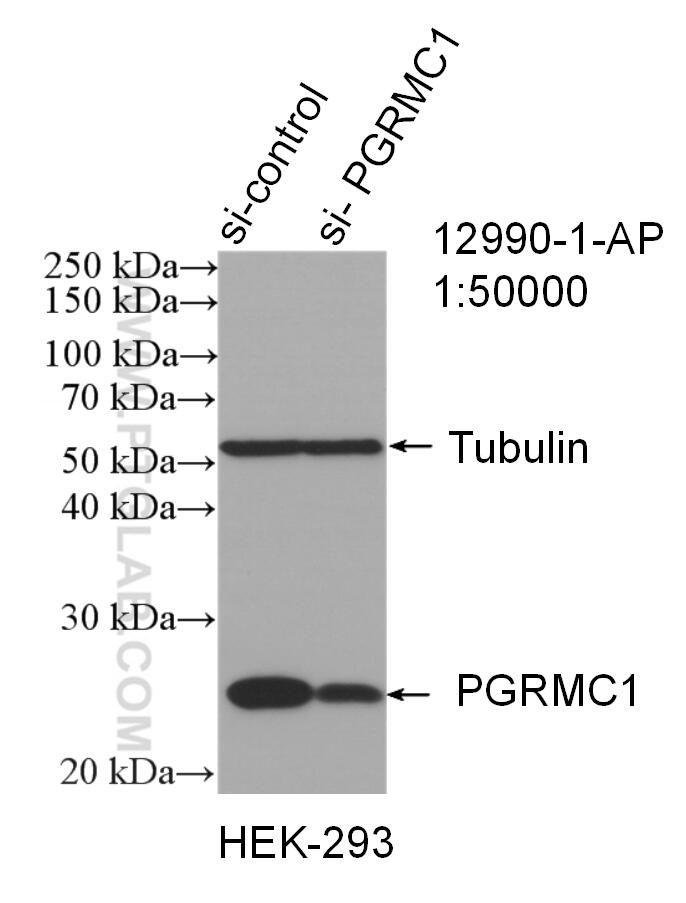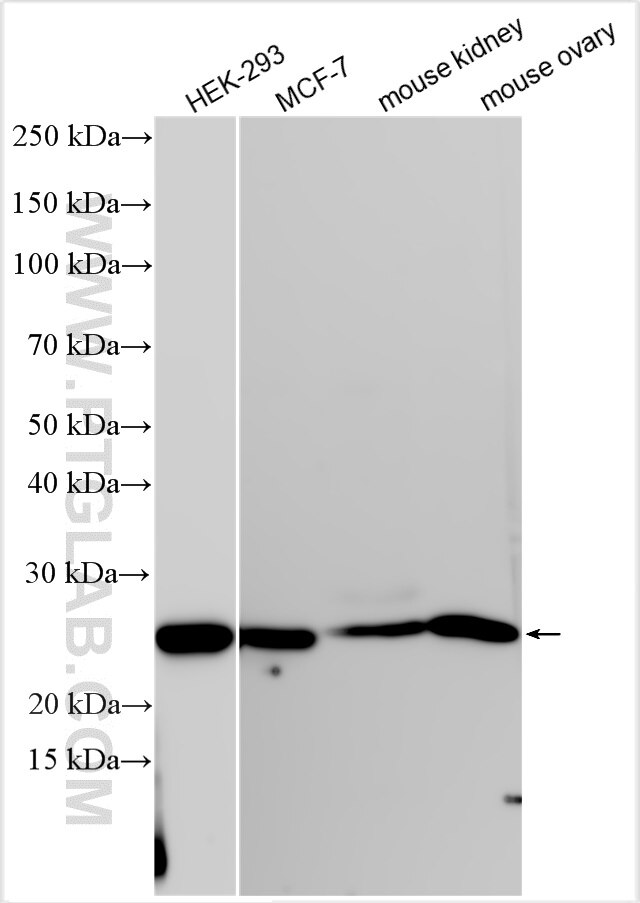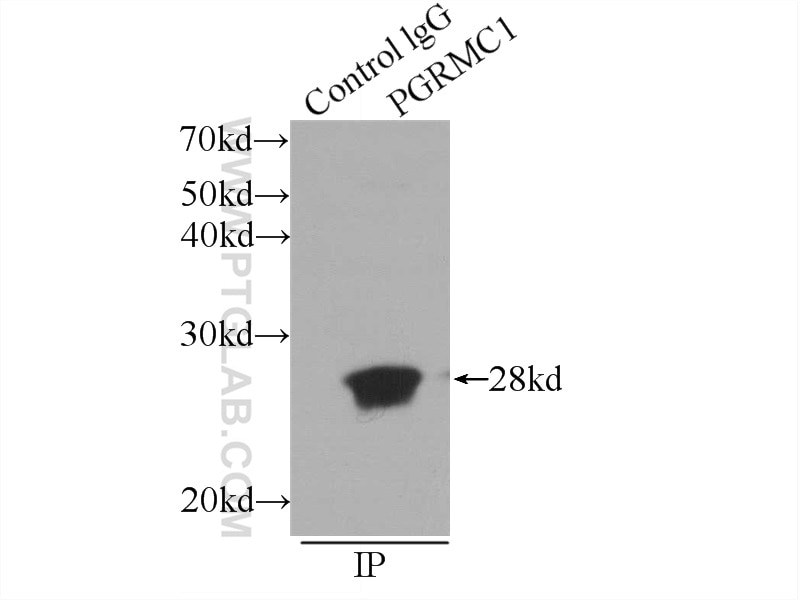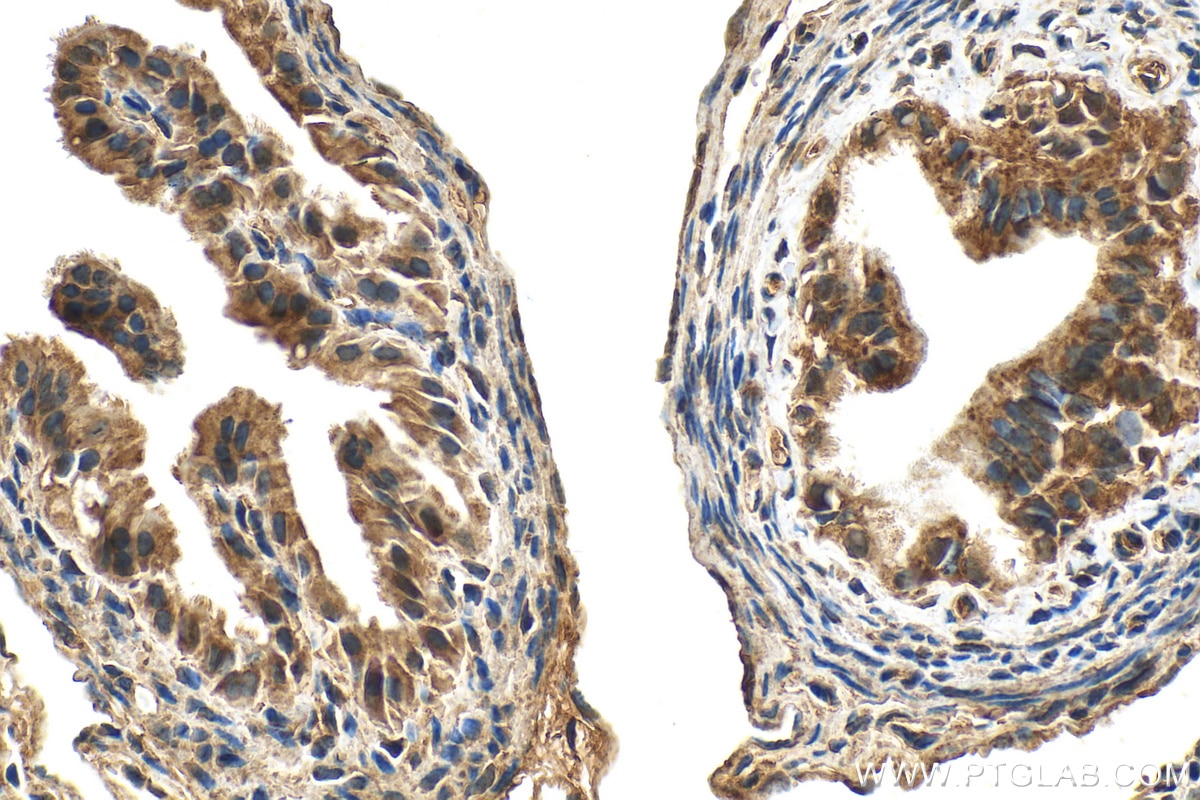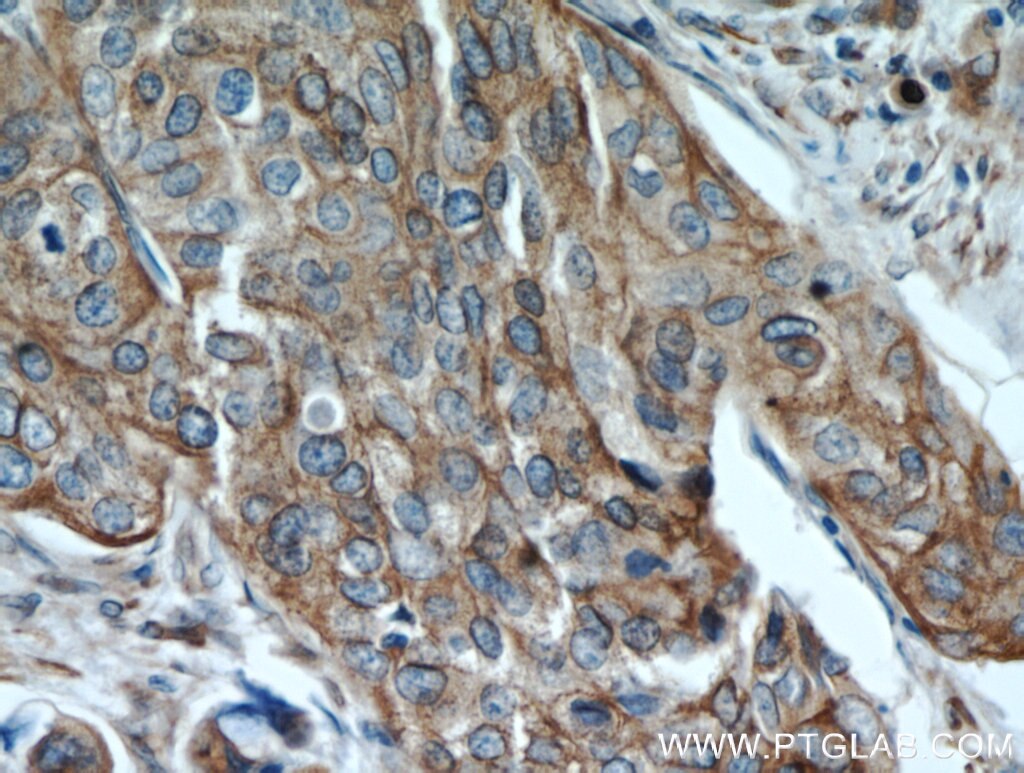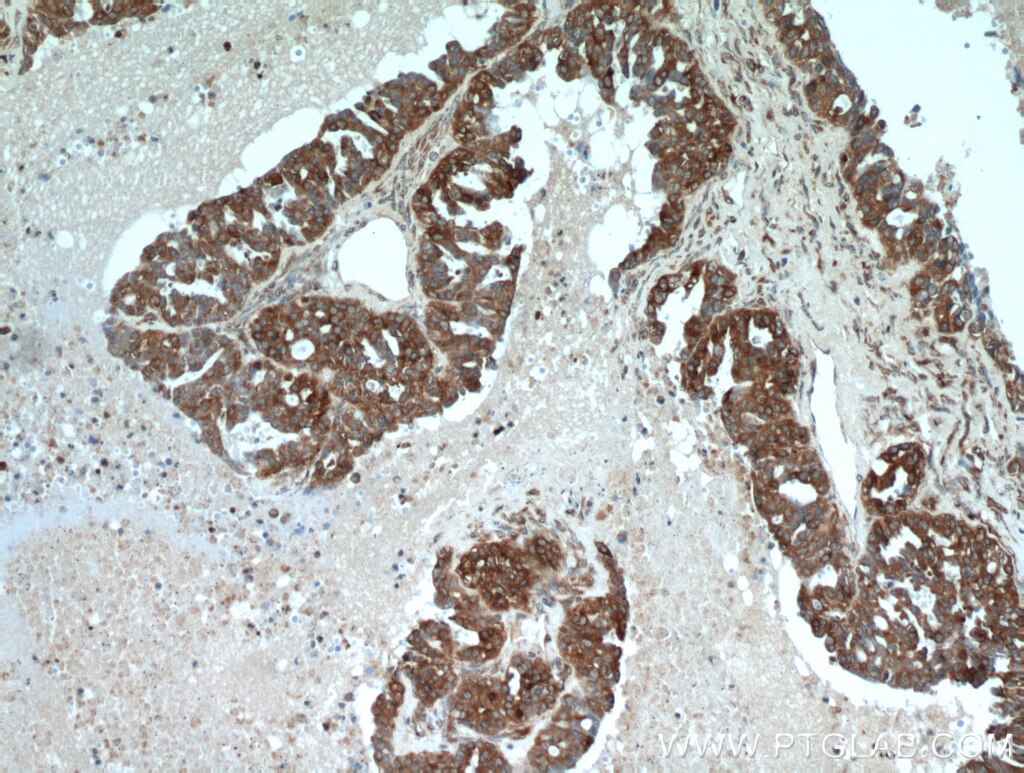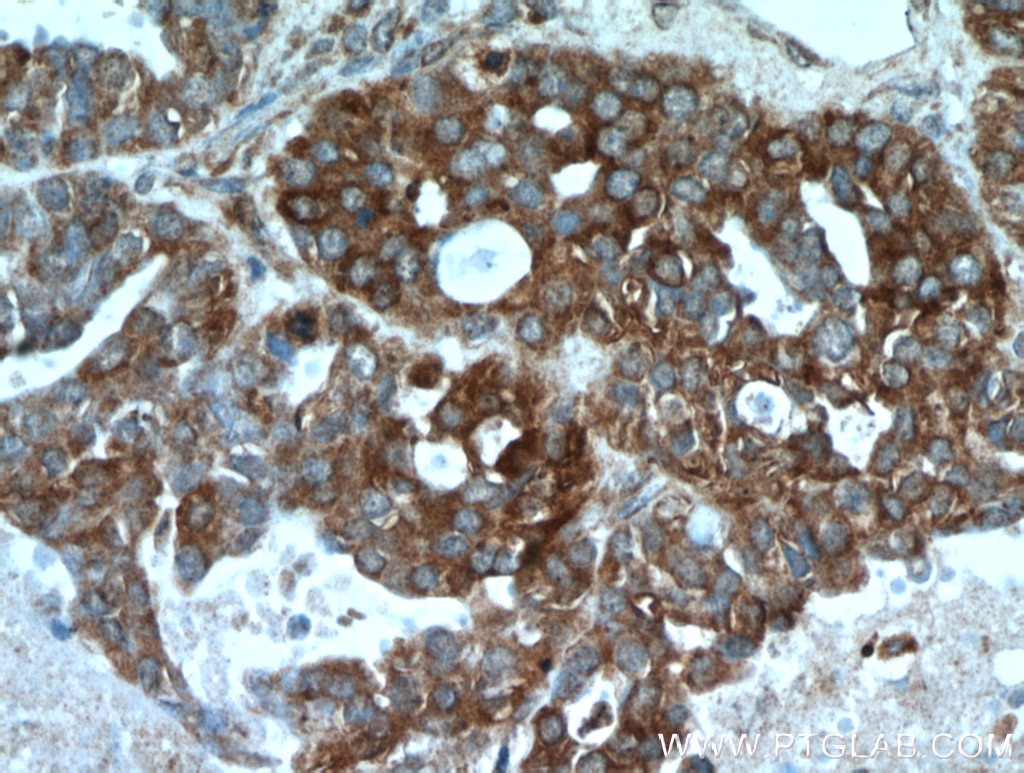- Featured Product
- KD/KO Validated
PGRMC1 Polyklonaler Antikörper
PGRMC1 Polyklonal Antikörper für WB, IHC, IF/ICC, IP, ELISA
Wirt / Isotyp
Kaninchen / IgG
Getestete Reaktivität
human, Maus, Ratte und mehr (1)
Anwendung
WB, IHC, IF/ICC, IP, ELISA
Konjugation
Unkonjugiert
Kat-Nr. : 12990-1-AP
Synonyme
Galerie der Validierungsdaten
Geprüfte Anwendungen
| Erfolgreiche Detektion in WB | HEK-293-Zellen, HepG2-Zellen, Maus-Eierstockgewebe, Mauslebergewebe, Mausnierengewebe, MCF-7-Zellen |
| Erfolgreiche IP | MCF-7-Zellen |
| Erfolgreiche Detektion in IHC | humanes Zervixkarzinomgewebe, humanes Lungenkarzinomgewebe, humanes Ovarialkarzinomgewebe, Maus-Eierstockgewebe, Mausnierengewebe Hinweis: Antigendemaskierung mit TE-Puffer pH 9,0 empfohlen. (*) Wahlweise kann die Antigendemaskierung auch mit Citratpuffer pH 6,0 erfolgen. |
| Erfolgreiche Detektion in IF/ICC | HEK-293-Zellen |
Empfohlene Verdünnung
| Anwendung | Verdünnung |
|---|---|
| Western Blot (WB) | WB : 1:2000-1:12000 |
| Immunpräzipitation (IP) | IP : 0.5-4.0 ug for 1.0-3.0 mg of total protein lysate |
| Immunhistochemie (IHC) | IHC : 1:50-1:500 |
| Immunfluoreszenz (IF)/ICC | IF/ICC : 1:200-1:800 |
| It is recommended that this reagent should be titrated in each testing system to obtain optimal results. | |
| Sample-dependent, check data in validation data gallery | |
Veröffentlichte Anwendungen
| KD/KO | See 6 publications below |
| WB | See 16 publications below |
| IHC | See 3 publications below |
| IF | See 2 publications below |
Produktinformation
12990-1-AP bindet in WB, IHC, IF/ICC, IP, ELISA PGRMC1 und zeigt Reaktivität mit human, Maus, Ratten
| Getestete Reaktivität | human, Maus, Ratte |
| In Publikationen genannte Reaktivität | human, Maus, Ratte, Rind |
| Wirt / Isotyp | Kaninchen / IgG |
| Klonalität | Polyklonal |
| Typ | Antikörper |
| Immunogen | PGRMC1 fusion protein Ag3643 |
| Vollständiger Name | progesterone receptor membrane component 1 |
| Berechnetes Molekulargewicht | 195 aa, 22 kDa |
| Beobachtetes Molekulargewicht | 22-28 kDa |
| GenBank-Zugangsnummer | BC034238 |
| Gene symbol | PGRMC1 |
| Gene ID (NCBI) | 10857 |
| Konjugation | Unkonjugiert |
| Form | Liquid |
| Reinigungsmethode | Antigen-Affinitätsreinigung |
| Lagerungspuffer | PBS mit 0.02% Natriumazid und 50% Glycerin pH 7.3. |
| Lagerungsbedingungen | Bei -20°C lagern. Nach dem Versand ein Jahr lang stabil Aliquotieren ist bei -20oC Lagerung nicht notwendig. 20ul Größen enthalten 0,1% BSA. |
Hintergrundinformationen
Progesterone receptor membrane component 1 (PGRMC1) is a member of a multi-protein progesterone-binding complex. However, PGRMC1 shares homology with cytochrome b5-related proteins rather than hormone receptors (PMID: 18992768). It is a heme binding protein with biding sites for Src homology (SH2) and SH3 domain-containing proteins (PMID: 17583495). PGRMC1 is overexpressed in a variety of cancers, and thus represents an important biomarker for cancer progression and a potential target for anticancer drugs (PMID: 21730960). In nonmalignant tissues, PGRMC1 is highly expressed in the liver and kidney (PMID: 9705155; 20164297).
Protokolle
| Produktspezifische Protokolle | |
|---|---|
| WB protocol for PGRMC1 antibody 12990-1-AP | Protokoll herunterladen |
| IHC protocol for PGRMC1 antibody 12990-1-AP | Protokoll herunterladen |
| IF protocol for PGRMC1 antibody 12990-1-AP | Protokoll herunterladen |
| IP protocol for PGRMC1 antibody 12990-1-AP | Protokoll herunterladen |
| Standard-Protokolle | |
|---|---|
| Klicken Sie hier, um unsere Standardprotokolle anzuzeigen |
Publikationen
| Species | Application | Title |
|---|---|---|
EBioMedicine The Sigma-2 Receptor and Progesterone Receptor Membrane Component 1 are Different Binding Sites Derived From Independent Genes.
| ||
Int J Cancer Elevated progesterone receptor membrane component 1/sigma-2 receptor levels in lung tumors and plasma from lung cancer patients. | ||
Transl Psychiatry A potential mechanism underlying atypical antipsychotics-induced lipid disturbances. | ||
Front Pharmacol A Potential Mechanism Underlying the Therapeutic Effects of Progesterone and Allopregnanolone on Ketamine-Induced Cognitive Deficits. | ||
Biol Reprod Hyaluronic Acid Promotes the Expression of Progesterone Receptor Membrane Component 1 via Epigenetic Silencing of miR-139-5p in Granulosa Cells. | ||
J Cell Physiol Progesterone maintains the status of granulosa cells and slows follicle development partly through PGRMC1. |
